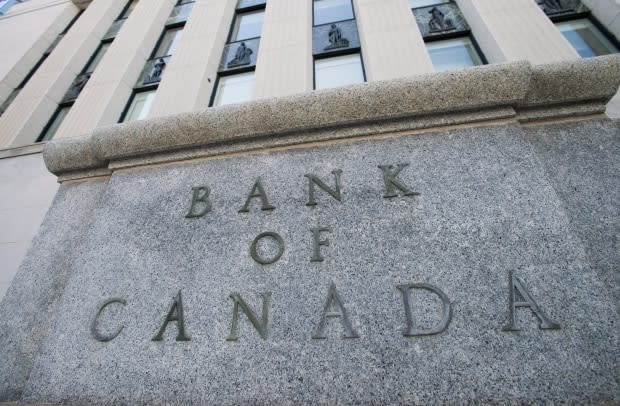Bank of Canada resists pressure to cut its interest rate — for now
Canada's central bank has decided to keep its benchmark rate at 1.75 per cent, despite "escalating trade conflicts" that are starting to take a toll on the country's economy.
The Bank of Canada said Wednesday it has elected to neither raise nor lower its benchmark rate, judging the economy to be growing at a healthy clip despite uncertainty over international trade.
The bank noted that exports are growing, the housing market is showing signs of a rebound, and wages are picking up.
On the flip side, business investment is weakening because of the trade war, which is why the bank thinks the economy will likely slow down in the second half of this year. "As the U.S.-China trade conflict has escalated, world trade has contracted and business investment has weakened," the bank said.
After weighing the pros and cons, the bank decided to keep rates right where they are — for now.
"Canada's economy is operating close to potential and inflation is on target," the bank said. "However, escalating trade conflicts and related uncertainty are taking a toll on the global and Canadian economies."
"In this context, the current degree of monetary policy stimulus remains appropriate."
That's the central bank's way of saying it thinks its benchmark interest rate is fine for now, but it is ready to adjust as necessary.
Eight times a year, the central bank meets to decide on where to set its benchmark interest rate. The bank last hiked in October of 2018 but has stood pat for the seven meetings since then. That's a time frame that has seen central banks around the world cut their rates in an attempt to offset the damage from an ongoing trade war.
So far, the Bank of Canada has been able to stay on the sidelines. But that may not last.
Broadly speaking, the bank will cut its rate to stimulate the economy, and it will raise the rate in order to tame inflation. The bank's rate filters down to the broader economy by impacting the rates that Canadian borrowers and savers get for things like mortgage and rate-sensitive investments.
TD Bank economist Brian DePratto is among those who think the bank is on track for a rate cut sooner rather than later.
"Reading between the lines, nearly every positive note in today's statement was balanced by a qualifier," he noted. "Even if the Bank of Canada has not telegraphed an October rate, we believe the backdrop makes it the most likely outcome."
Prior to the decision, traders thought there was a slight chance of a rate cut. Now that the bank has said it will stand pat for now, however, investors are pricing in about a 50/50 chance of a rate cut next month.

Not everyone is convinced that will happen.
James Laird, president of mortgage brokerage Canwise Financial, said Wednesday he saw nothing in the bank's statement to suggest the bank would be in a rush to lower rates.
"This announcement should throw some cold water on the prediction that we could see a rate cut as soon as next month," Laird said.
Currency investors are similarly skeptical. All things being equal, a rate cut is bad for a country's currency, because it reduces the value of investments in that currency. So if a rate cut is coming, a currency should decline.
But that's not what happened on Wednesday. The Canadian dollar jumped up a third of a cent after the Bank of Canada's decision came out. That's a sign that currency investors don't think a cut is imminent.

